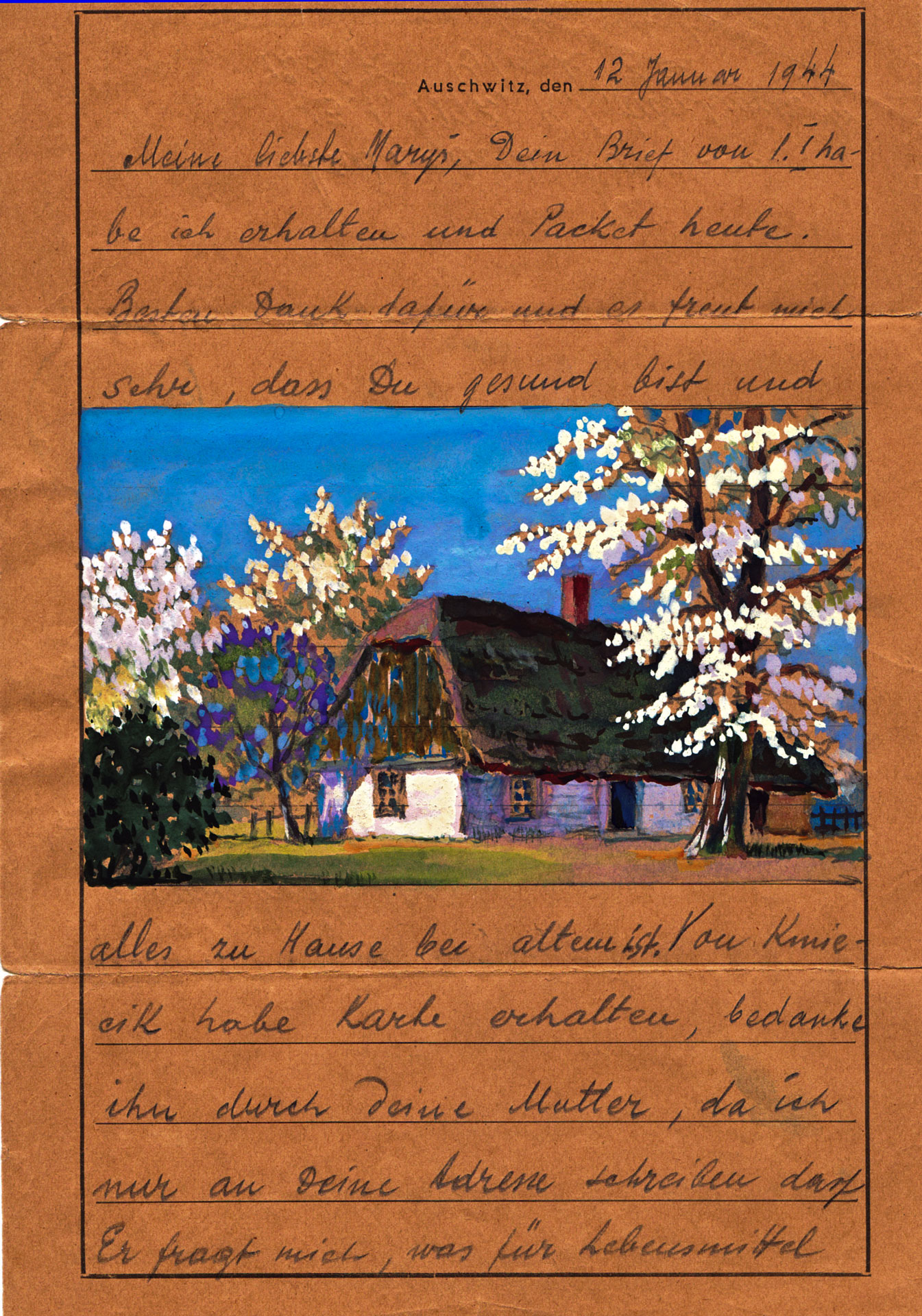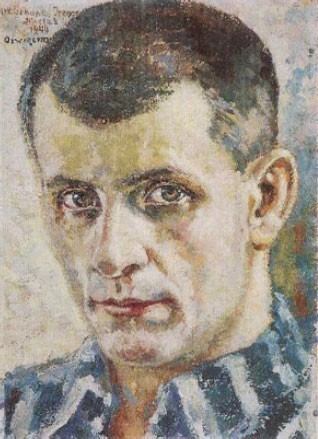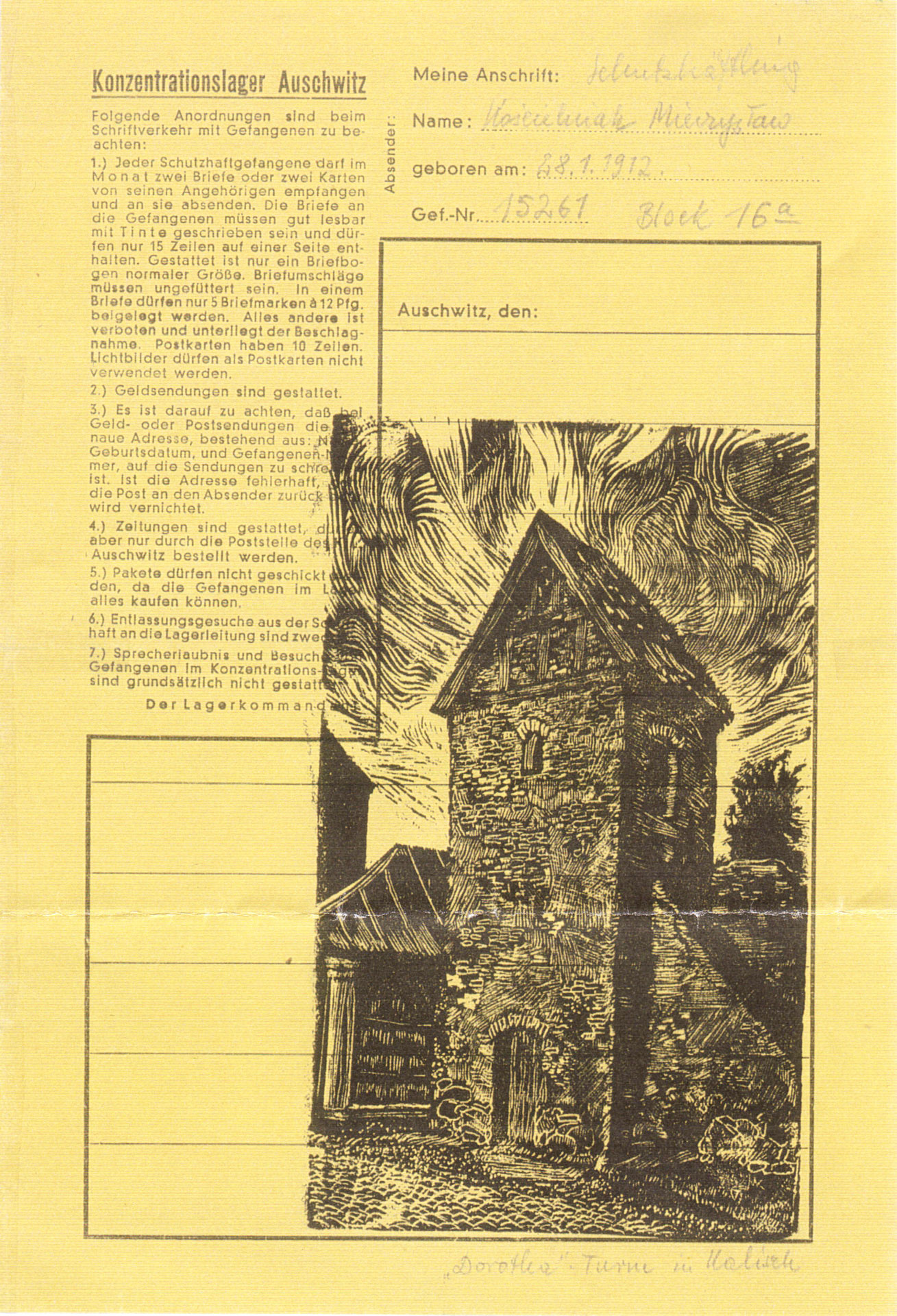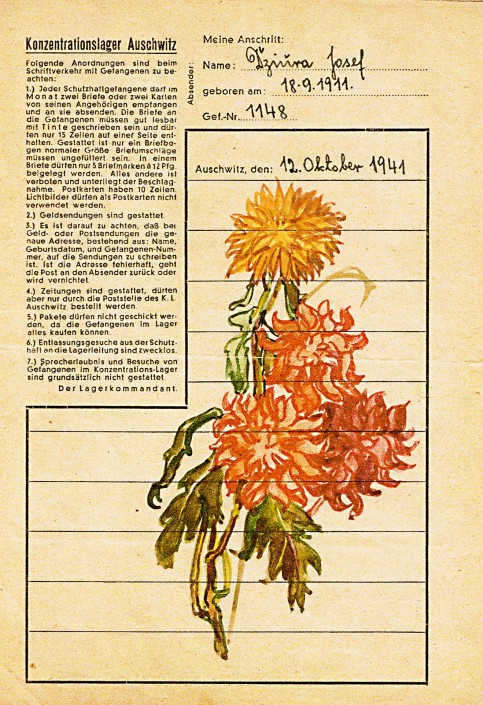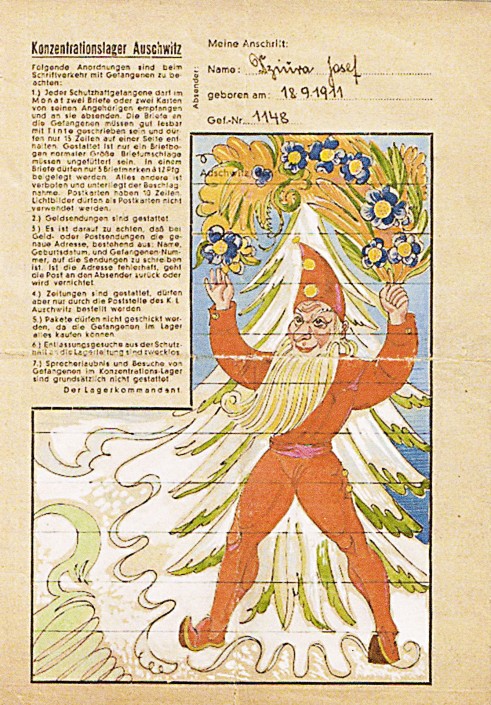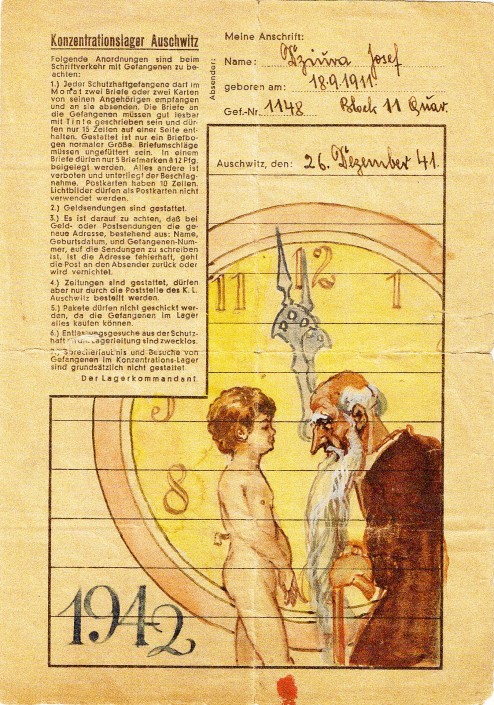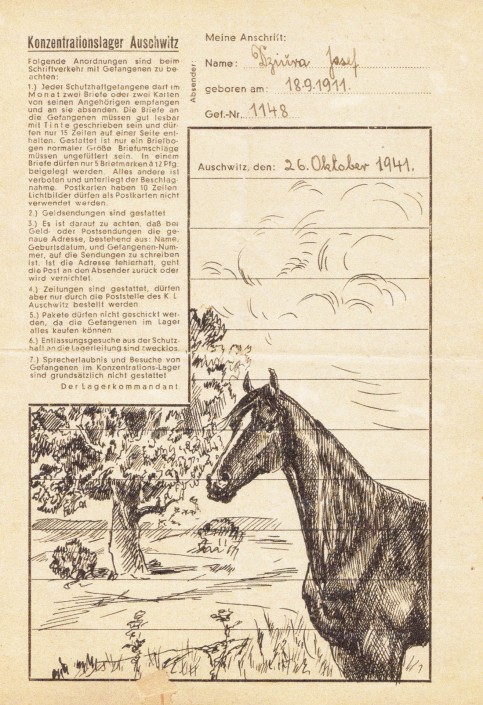Illustrated KZ Mail Part 2
There were numerous artists incarcerated at Auschwitz, and through various means many of them were allowed to pursue their art. The most easily understood arrangement involved painting or decorating at the command of the SS, usually for the camp art museum. 5killed prisoners such as these were usually held in higher regard by the SS, at least temporarily. As a result they were sometimes allowed to paint or draw on their own, provided the subject matter did not violate regulations.
Other artistic prisoners drew in secret, showing their work to no one out of fear of almost certain retribution. Penalties included beatings and the suspension of mail privileges for months at a time. For many the motivation was simply to forget their surroundings and for the moment lose themselves in painting.
SZCZEPAN ANDRZEJEWSKI
The lettersheet in Figure 1 was painted by prisoner No. 123875, 5zczepan Andrzejewski, an art educator who had studied at the Royal Bavarian Academy of Fine Arts in Munich. He was the founder of art schools in both Lodz and Radom.
The Gestapo subsequently arrested Andrzejewski, and after a stay in various prisons was sent to KZ Auschwitz on June 4, 1943, where he was assigned to a laundry detail. Along with other Auschwitz artists he was put to work in the camp museum painting landscapes and portraits of his fellow prisoners. By August 1944 Andrzejewski had been transferred to KZ Dachau, where he worked in various sub-camps decorating candlesticks and porcelain figurines in 55-owned factories. He survived the war.
Figure 1
Folded letter written and painted by Auschwitz prisoner Szczepan Andrzejewski on January 12, 1944.
MIECZYSLAW KOSCIELNIAK
Another survivor was prisoner Mieczyslaw Koscielniak (Figure 2), first introduced in Part 1 of this article. Born in Kalisch, Koscielniak was already a skilled artist specializing in the illustration of classic literature when he was arrested and sent to Auschwitz in early 1941. At great risk to his own life he smuggled a large number of drawings depicting life in Auschwitz out of the camp in a load of dirty laundry. These drawings are now on display at the Auschwitz-Birkenau State Museum, of which Koscielniak was one of the principal founders.
The lettersheet written by Koscielniak shown in Figure 3 has a wonderful block print on the front, presumably carved from wood or linoleum. The illustration is titled at the bottom: ”’Dorotka’ Turm in Kalisch,” and depicts the image of a famous medieval tower. It is interesting to speculate that separate mail objects from Koscielniak or other prisoners might show the same image, since the block could be used repeatedly. Koscielniak developed contacts with many notable international dignitaries after the war, and continued creating art until his death in 1993.
Figure 2
Self portrait by Mieczyslaw Koscielniak. Auschwitz prisoner No. 15261, painted in 1944.
Figure 3
Auschwitz letter sheet with block print created by prisoner Mieczyslaw Koscielniak.
Click on image to see enlargement/slide show
BOTANICAL, HOLIDAY SCENES AND ANIMALS
As described earlier in Part 1, botanical subjects are encountered repeatedly in illustrated KZ mail, and the art of] osef Dziura is no exception (Figures 4-6). This prisoner was also adept at painting holiday scenes (Figures 7-9) and animals (Figure 10).
For some ‘reason there was a burst of activity from Dziura in the last three months of 1941. The records indicate that he was released from Auschwitz in January 1942, shortly after these letters were sent. Unfortunately, I have been unable to find out any further information about this prisoner, so I will let his artwork speak for him.
Thanks to Wolfgang Haney and Jakob Wodzislawski for providing copies of illustrated KZ prisoner mail. Special thanks to Erik Lordahl for tracking down some of the illustrations for this article.
Post Script:
Jewish prisoners in the camps prior to 1938 were allowed to write, and the Esterwegen examples in Part 1 are clearly illustrated mail and the artists probably Jewish. But these are rare items. After 1938 writing privileges were slowly withdrawn from Jewish prisoners in all of the camps, and illustrations showing. any sort of Jewish symbolism could well have gotten someone killed. I believe most readers of my Illustrated KZ Mail articles will instinctively understand this. IfI were to come across a KZ letter illustrated with Jewish symbols, the first word that would come to mind is “forgery.” There were postal and administrative cachets used in the ghettos that did have such symbols, but this the SS allowed for their own reasons.
In the concentration camps Jewish prisoners were only allowed to write in exceptional circumstances, such as part of Operation Mail, which was designed to cover up the true nature of the camps. In short, they could write only if it was to the advantage of the SS. Most of the mail we have from the camps after 1938 is by non-Jewish prisoners, and it is these mail objects that have allowed us to understand the inner workings of the camp postal system during the war years, and ultimately the camps themselves. The very lack of mail is testimony to the low status the Jews had in the camps, and is entirely consistent with the high death rate for Jewish prisoners. Auschwitz was the extreme example: 1.2 million people died there, of whom 90% were Jewish.
Sources
www.exil-archiv.de www.mieczyslawkoscielniak.com www.polskieszlaki.pl
Erik Lordahl, German Concentration Camps, 1933-1945, History and Inmate Mail, War and Philabooks Ltd., Tarnasen, Norway, 2006 .•
J. Scott Sawyer, PhD, The Israel Philatelist, April 2010

